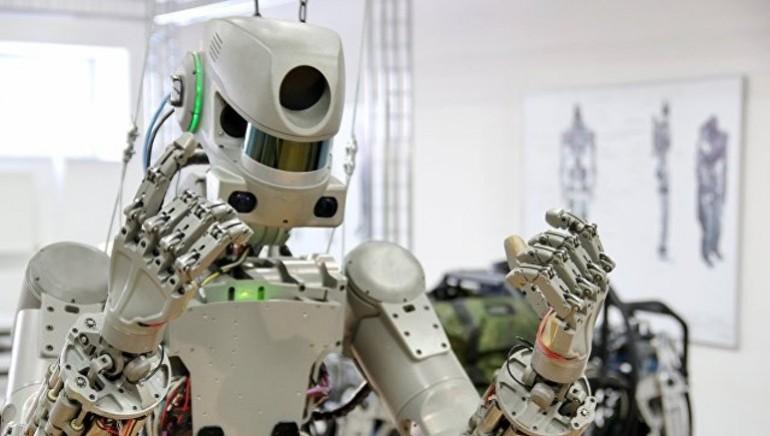
By next year, Russia will be sending two life size robots called Fedor to the International Space Station. The Russian space agency- Roscosmos has already approved the plans to launch what will be the nation's first robot cosmonauts.
According to the state-backed Russian news outlet RIA-Novosti, the Fedors will be sent to the ISS by August 2019. While this will be the first Russian humanoid robot or Android in the space station, the US has already sent "Robonaut2" in 2011 to see just how useful robots in space can be, at least to carry out repetitive and dangerous tasks, reports Defense One.
Apart from humanoid robots in space, there are several other robots in space right now. Lunar landers, rovers, including the Mars rovers are all robots that are currently carrying out experiments in regions where humans just cannot go to. China also has a rover on the Moon. Russia reportedly has one on Mars.
While most robots that go to space are packed in like cargo in boxes and shipped off to space in capsules, the Fedor twins will be sent like crew and not stowed away in the cargo space, reports RIA. This is being seen as a PR move, notes the report, but the two robots will be flying without any other humans on orbit "piloting" the Soyuz on their way to the ISS.
Fedor is the same "Terminator" robot that was seen driving and firing guns with frightening accuracy last year. Fedors were first built to assist emergency services with rescue missions, notes the report, but it then grew to learn various tasks that include using power tools and lifting weights. The robot made enough waves that Deputy Prime Minister Dmitry Rogozin went on Twitter to deny that Fedor was a killer sci-fi robot, but a part of a much larger effort to develop AI for "practical significance in various fields," notes the report.
Fedor was initially designed as a proof-of-concept, said Sam Bendett, researcher at CNA. "The space role for this robot was implied from the beginning. It does make for a very effective military 'android' in official videos where its shooting guns,
"but ultimately it's a dual-use work frame for hard-to-do projects like working in space or in other hazardous environments," he explained.














